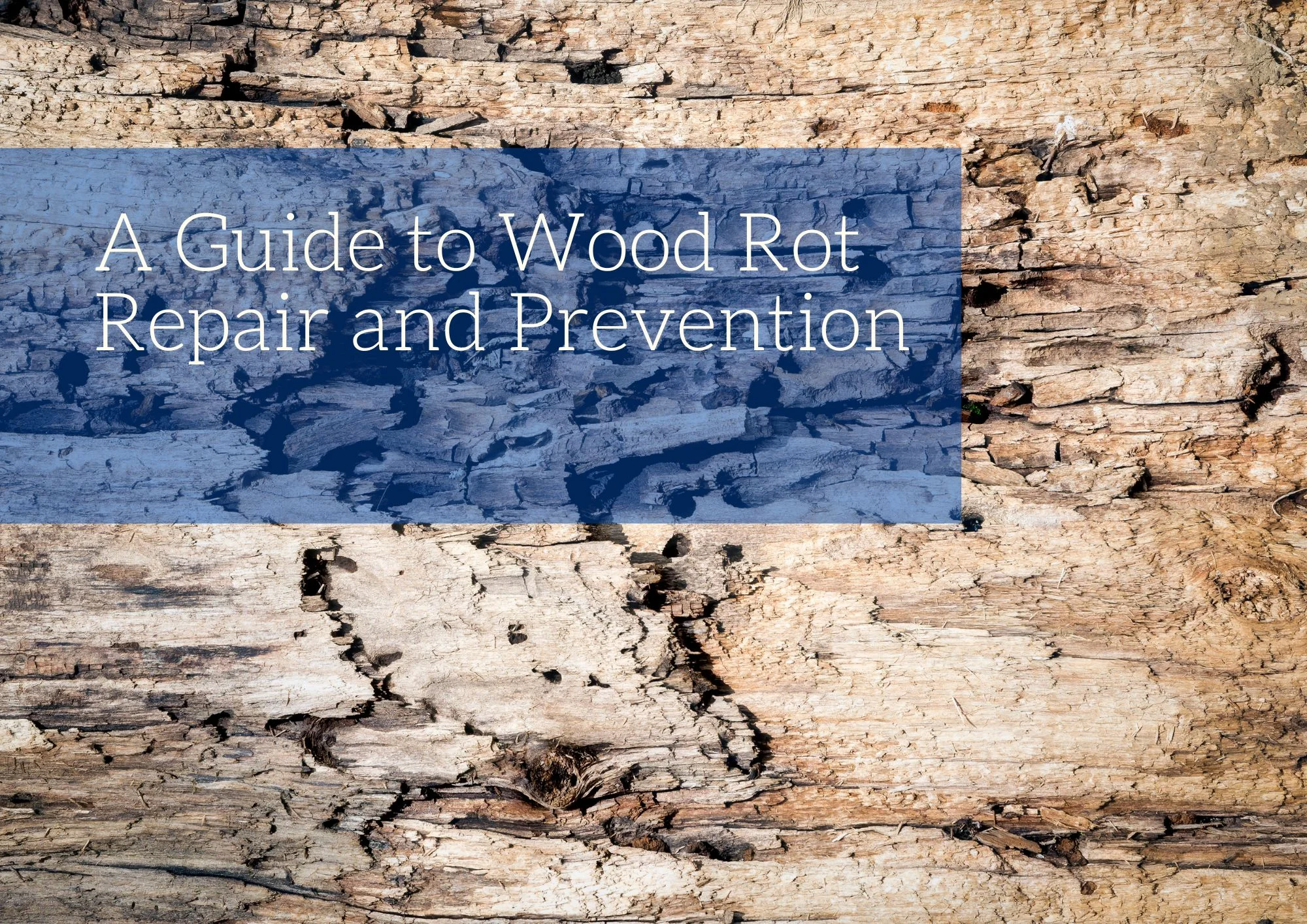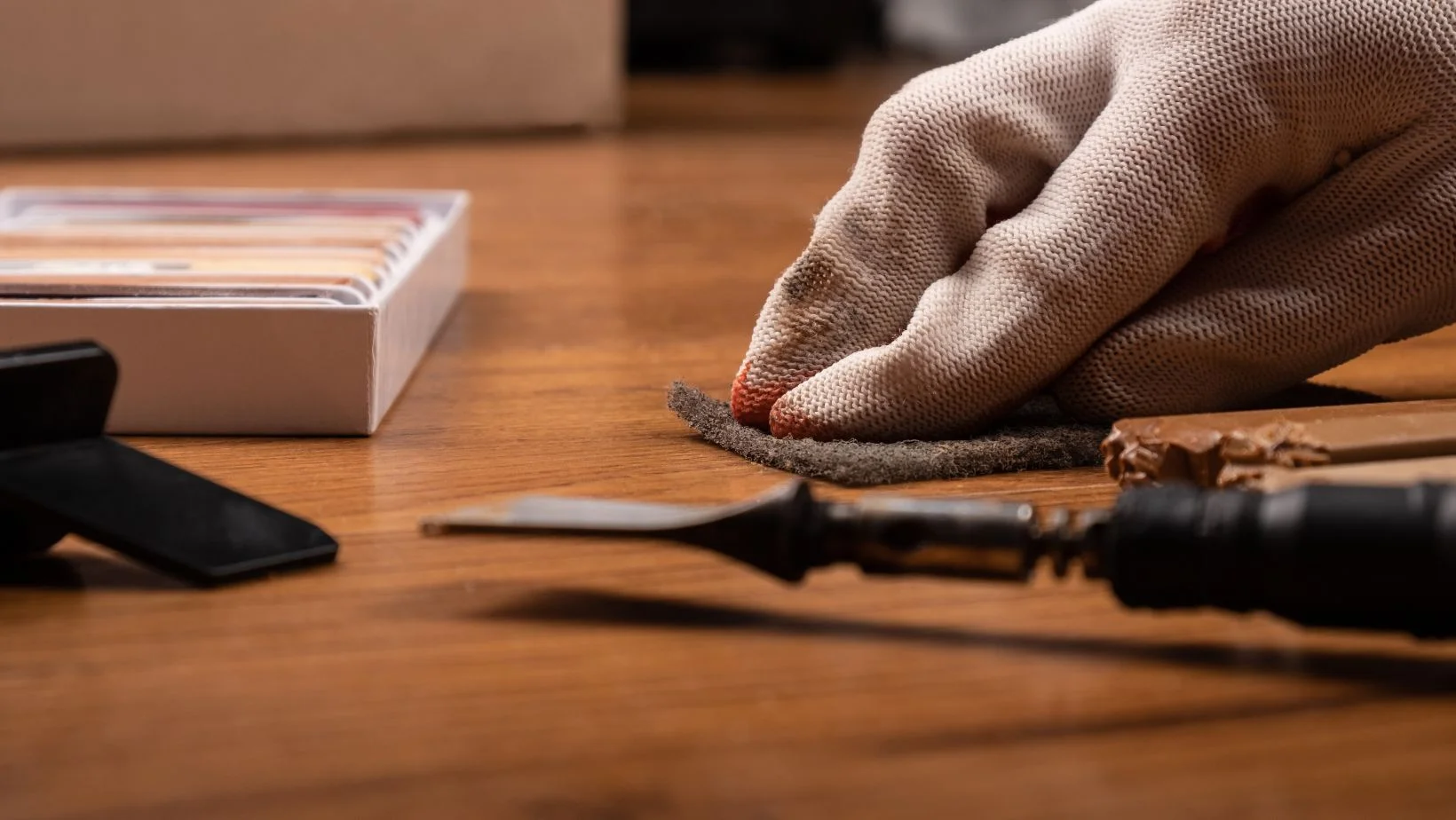Wood rot can quietly undermine the strength of your home or wooden structures, posing not only a threat to their longevity but also potential health risks due to mold. In this comprehensive guide, we’ll walk you through the steps of wood rot repair and share proactive measures to prevent its recurrence. It’s crucial to recognize the signs, understand the causes, and act promptly to maintain the beauty and integrity of your wood. Ignoring wood rot can lead to structural damage and result in more extensive and costly repairs, making it imperative to address this issue without delay.
How to Identify Wood Rot
Begin by inspecting wood surfaces for signs of flaking paint. This signals water infiltration into the wood. As the board dries, the sun’s influence draws the water through the wood, causing the paint to detach from the surface.
Additionally, be attentive to the presence of soft or brittle wood that easily flakes off. This condition denotes advanced decay and could be indicative of the potential presence of carpenter ants.
Should You Go for Wood Rot Repair or Replacement?
If you’re able to address the deteriorating wood by repairing it, it’s advisable to do so. Ensure that you properly seal and flash the board to prevent the recurrence of rot. This advice is particularly relevant for items such as window and door trim, fascia boards, decking, and other types of wood that are readily obtainable.
However, it’s important to recognize that replacing a board isn’t always a simple task. In situations involving window or door sills, the replacement of rotting wood may present a substantial undertaking, especially if there’s still an ample amount of sound wood remaining. In such cases, a more prudent approach involves scraping, chopping, or sanding away as much of the compromised wood as possible before initiating the restoration process. This method ensures that the repair is focused on the affected areas while preserving the integrity of the structure at large.
Wood Rot Repair Process
Assessment and Removal: Begin by identifying the extent of the decay and removing the compromised wood. Assess the affected area thoroughly.
Application of Wood Rot Restorer: Prior to restoration, apply a specialized wood rot restorer to strengthen the damaged wood. Ensure ample coverage.
Filling with High-Quality Wood Filler: Use a putty knife to apply a high-quality, two-part wood filler to the damaged surface. Apply the hardener judiciously for optimal results.
Sanding for a Smooth Finish: Once the filler has dried, meticulously sand the surface to achieve a smooth and even finish. This step is crucial for concealing the repair effectively.
Priming and Painting: Proceed with priming and painting to complete the restoration seamlessly. This comprehensive approach not only ensures structural integrity but also results in a visually appealing and durable finish.
After removing the deteriorated wood, the restoration process can take place onsite with the specialized supplies designed for the job.
After applying a wood restorer if needed, use a putty knife to fill the surface with a high-quality wood filler. Most of these fillers come in two-part formulas, and it’s advisable to not apply too heavily at this stage.
Once the filler has dried, sand it to achieve a smooth and even surface, effectively concealing the repair. Following this, proceed with priming and painting to complete the restoration process seamlessly. This comprehensive approach ensures not only the structural integrity of the repaired area but also a visually appealing and durable finish.
Key Prevention Measures
Ventilation Matters: Adequate ventilation is crucial to prevent condensation, a common precursor to wood rot. In areas where droplets accumulate, especially around windows, ensuring proper air circulation is key. Consider using a dehumidifier, particularly when cooking or showering, to reduce moisture levels.
Seal Gaps: Addressing gaps in caulk or sealant around doors and windows is essential in preventing water from seeping into the wood. These openings, if left untreated, can contribute to wood rot. Regularly inspect and promptly repair any damaged or deteriorated seals to maintain a watertight barrier.
Choose the Right Wood: When purchasing wood, especially for structures like decking or fencing that are exposed to the ground, it’s vital to choose durable wood. Not all wood is equally resistant to rot, and selecting varieties designed for ground contact enhances durability and minimizes the risk of decay issues.
Regular Inspections: Conducting regular inspections, ideally on an annual basis, is a proactive approach to wood rot prevention. Focus on areas prone to moisture exposure, such as around windows, doors, roofs, and decks. Identifying and addressing potential issues early allows for timely and effective interventions, safeguarding the structural integrity of the wood. Regular maintenance is key to preventing wood rot and ensuring the longevity of wooden structures.
FAQ
- Can I tackle wood rot repair as a DIY project, or should I hire a professional?
Small, isolated cases of wood rot may be suitable for a DIY project if you have the necessary skills and tools. However, extensive or structural damage is best left to professionals to ensure thorough and proper repairs.
- How often should I inspect my home for potential wood rot?
Regular inspections, ideally on an annual basis, are recommended. Pay close attention to areas prone to moisture exposure, such as around windows, doors, roofs, and decks.
- Can I prevent wood rot in outdoor wooden structures like decks and fences?
Yes, regular maintenance is crucial for outdoor wooden structures. Apply water-resistant sealants or stains, keep the structure clean, and promptly address any signs of damage or wear.
- What are the long-term effects of untreated wood rot?
Untreated wood rot can lead to structural damage, compromise the integrity of the affected area, and even pose health risks due to mold growth. It’s essential to address wood rot promptly to avoid more extensive and costly repairs.
By understanding the signs, causes, and repair techniques outlined in this comprehensive guide, you’re better equipped to tackle rotting wood head-on. Remember, whether you’re addressing minor decay or undertaking a more extensive restoration, early detection and swift action are paramount. Embrace preventative practices, such as proper ventilation and maintenance, to create a robust defense against the elements. Through a commitment to preservation and informed decision-making, you can ensure that your wooden structures stand the test of time, maintaining both their structural strength and aesthetic appeal.










